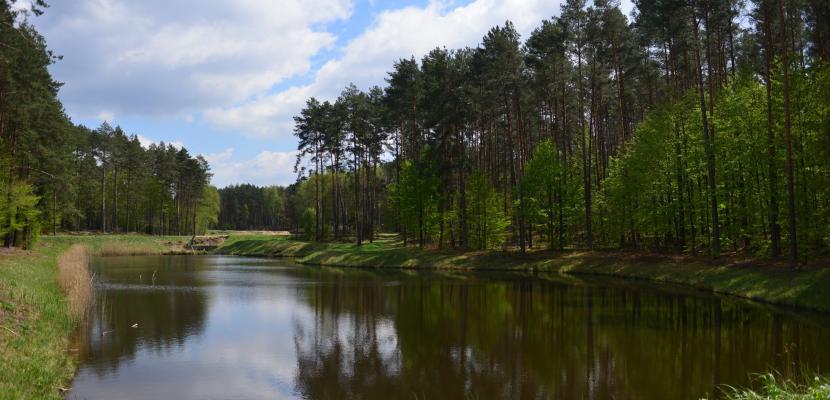
Small-scale Retention Programe in Forests as nature-based climate change mitigation

About this good practice
Protection and management of the forest is strictly dependent on water conditions.
One of the main problems observed in forests in recent decades is the lowering of the groundwater level and the related disappearance of hydrogenic ecosystems. As a result of the permanent lowering of the groundwater level, processes of weakening and even dying of forest stands have been observed. There is also a visible increase in the activity of harmful organisms that contribute to the imbalance in the forest ecosystem. The small retention program is designed to contribute to raising the level of groundwater, rebuilding hydrogenic habitats, protecting soils, increasing biodiversity and strengthening the function of the forest in the process of carbon absorption. The program has been implemented in 7 forest districts in the Świętokrzyskie Region. The implementation of the program was coordinated by Regional Directorate of State Forests. Field work under the program was performed by external companies supervised by employees of forest districts. Works related to the construction of hydrotechnical devices (reservoirs, dams, penstocks) were carried out in difficult terrain conditions. As part of the construction work, only natural materials were used. Legal support for the program required coordinating activities with nature protection authorities and local governments. Due to the activities carried out in areas of high natural value, the state forests also cooperated with naturalists.
Expert opinion
Resources needed
The total cost of the program is approximately 3 000 000 EUR. European Union funds accounted for 60% of the contribution to the project. The remaining funds came from the budget of the State Forests. In each of the seven forest districts there was a person responsible for the program.
Evidence of success
During the implementation of the programme, 43 new water reservoirs were created and 61 new dams and other water damming devices were built. It was estimated that more than one million cubic meters of water were retained.
Preliminary natural analyzes showed that the groundwater level increased around the areas covered by the program. An improvement in soil moisture conditions and an increase in biodiversity were also observed.
Potential for learning or transfer
Measures related to small retention in forests can be universally applicable in forest areas in Europe. Raising the groundwater level stabilizes the humidity conditions in the habitats directly surrounding the small retention facilities.
These areas have also been mostly excluded in Poland from economic activities, which contributed to the increase in biodiversity, increase in dead wood resources and improvement of soil conditions. Ultimately, this leads to increased carbon accumulation based on natural processes, which, according to recent scientific studies, is the best method for increasing the resilience of forest ecosystems to climate change. The activities carried out in the small retention project also showed that sometimes simple measures to slow down the outflow of water from the forest are enough, such as, for example, leaving fallen trees or protecting beaver sites that build natural dams.
All these examples can be used universally in forests all over Europe.

